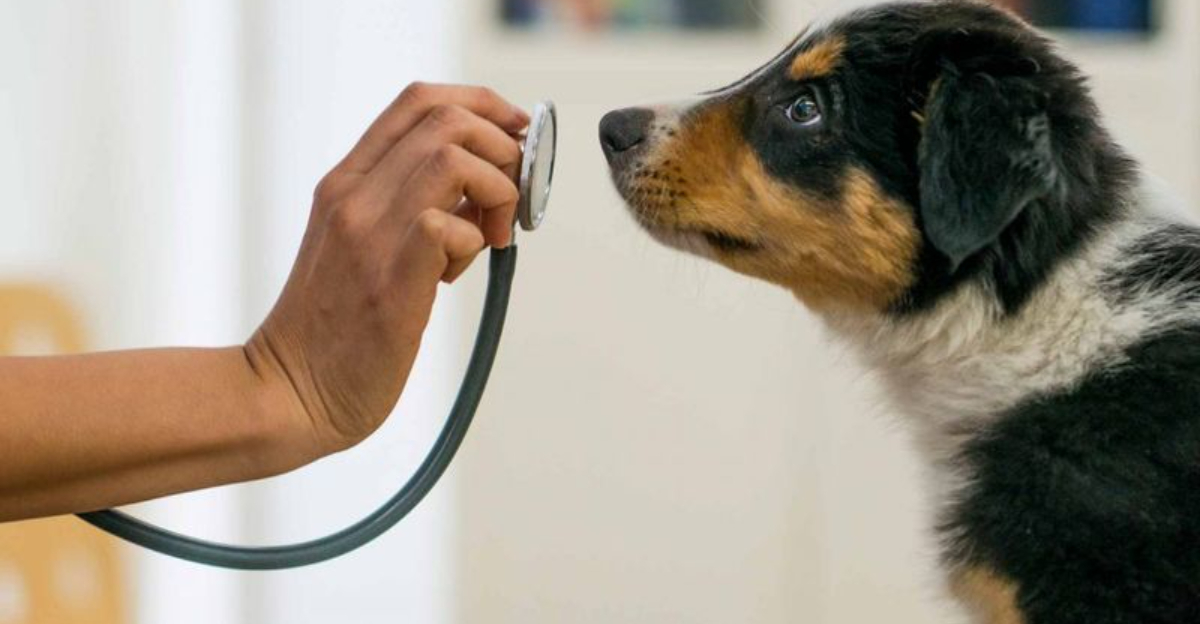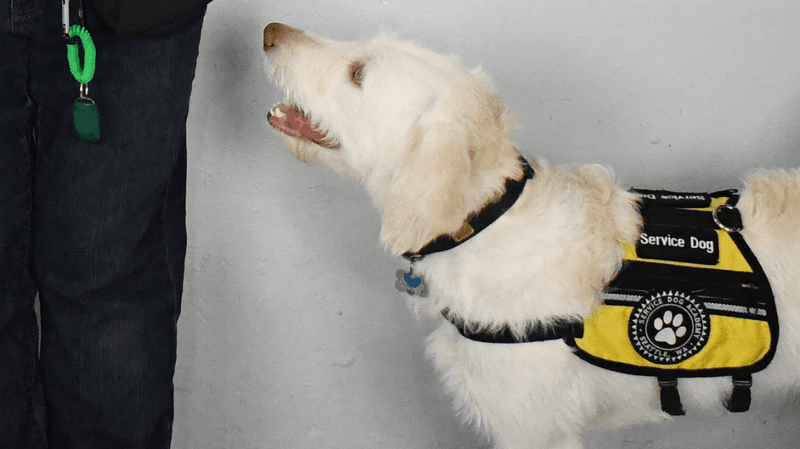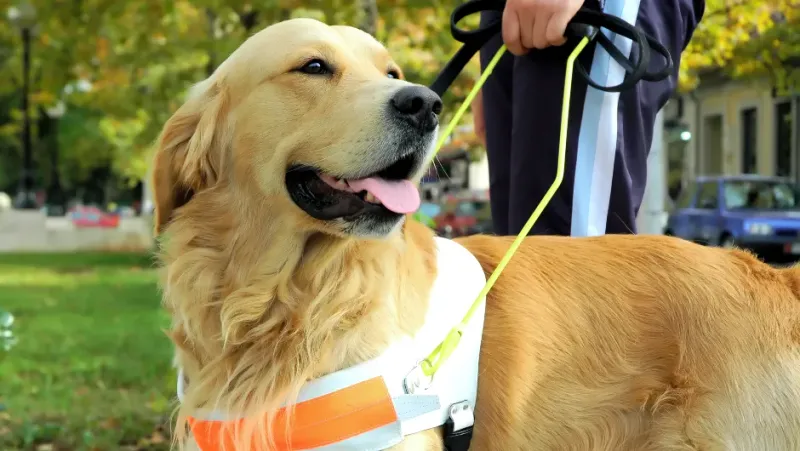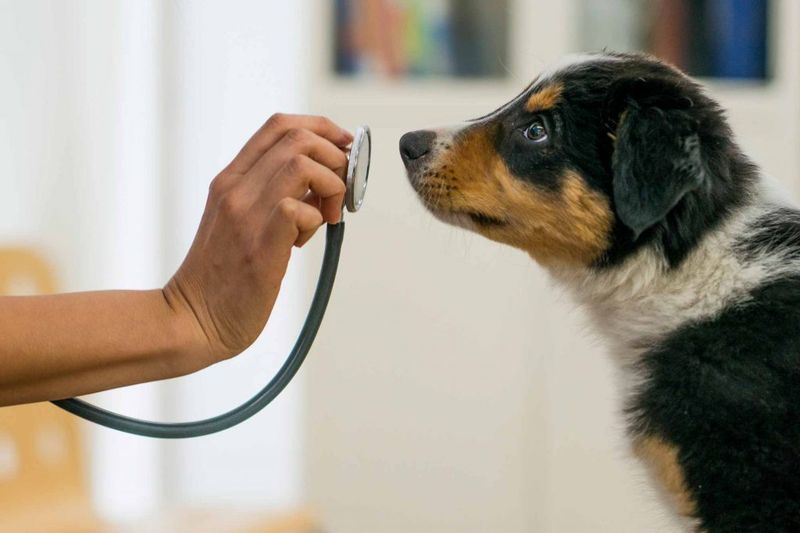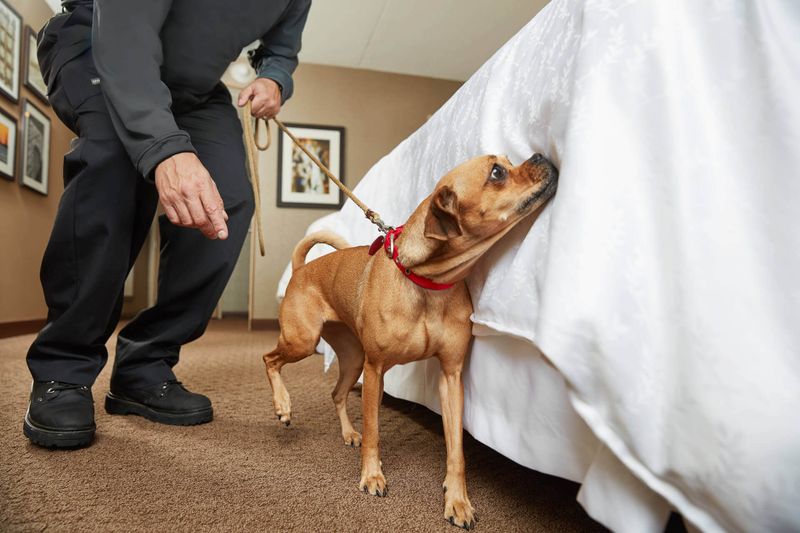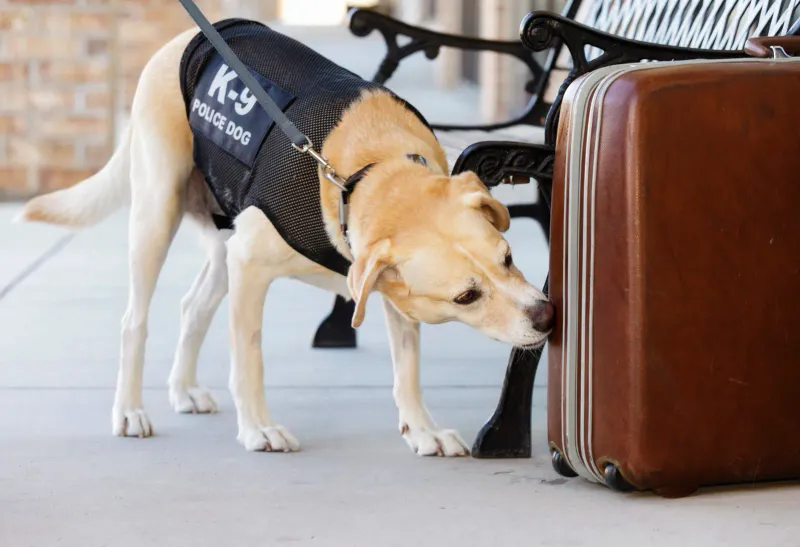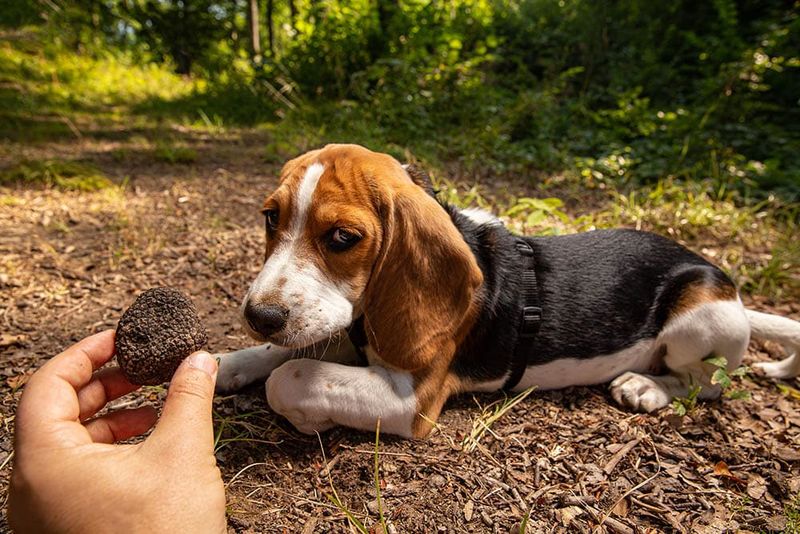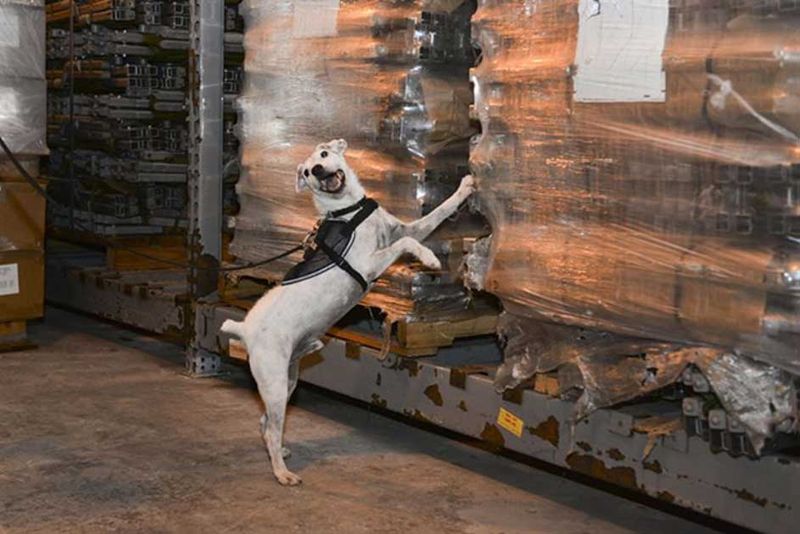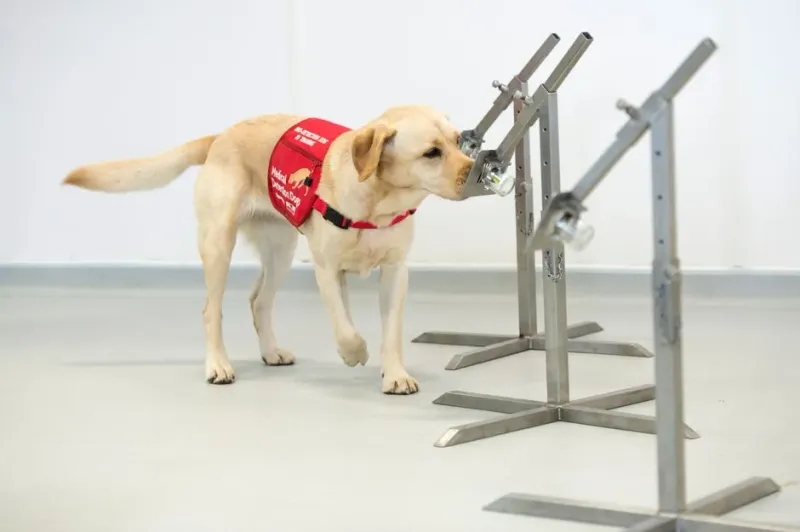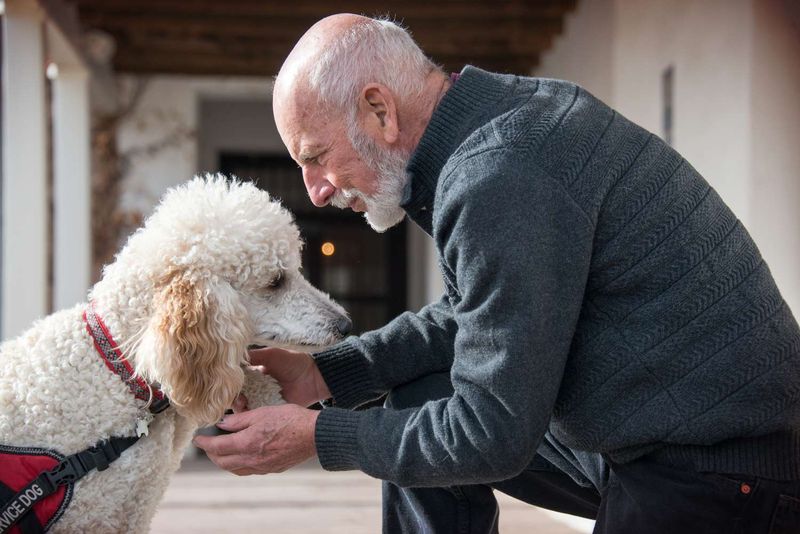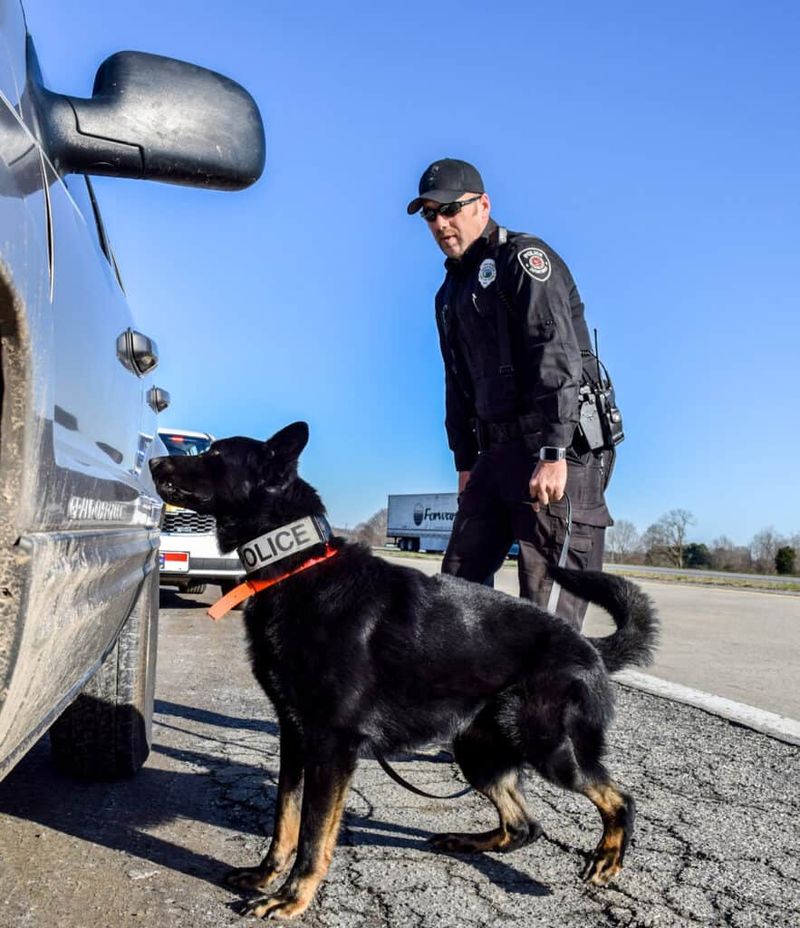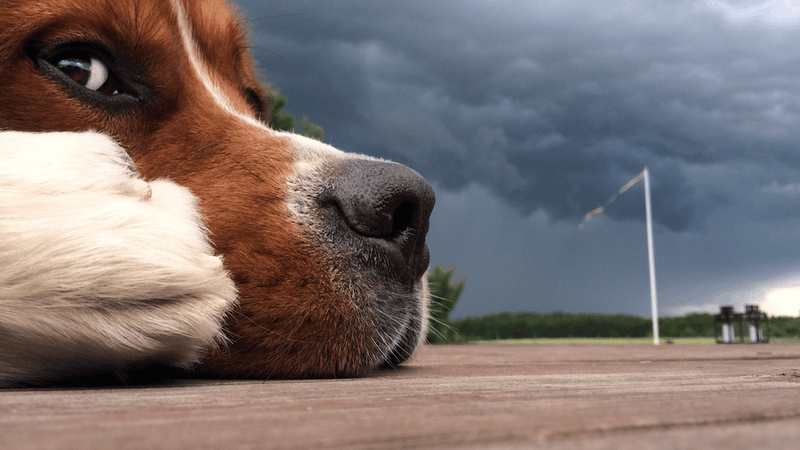Dogs have an incredibly keen sense of smell, allowing them to detect things that are completely invisible to our human noses. This remarkable ability is not just fascinating, but it also plays a crucial role in various aspects of our lives, from safety to companionship. In this blog post, we explore 17 intriguing things that dogs can smell, but you can’t.
Fear
Dogs can sense fear, as astonishing as it sounds. This ability is attributed to their keen sense of smell. When humans experience fear, we release pheromones and adrenaline. Dogs can pick up on these chemicals, allowing them to understand their owner’s emotions. Imagine a situation where a protective dog senses danger and stands guard, offering a comforting presence. The bond between humans and dogs is so unique, especially when they respond to our unspoken fears. This remarkable connection further cements the companionship between man and their four-legged friend.
Diabetes
Dogs are trained to detect low blood sugar levels in diabetic patients, often before they themselves know it. Through the scent of their owner’s breath or sweat, these dogs can alert them to changes in glucose levels. Service dogs for diabetics can be lifesavers, providing an early warning that gives time for corrective action. This remarkable skill makes a huge difference in the lives of those with diabetes. The presence of a loyal dog able to detect subtle changes in health is not just comforting but potentially life-saving.
Pregnancy
Dogs can often detect pregnancy before a woman even knows. The hormonal changes in a pregnant woman’s body emit specific scents that dogs can pick up on. It’s not uncommon for a dog to become more protective or affectionate towards its owner during this time. This nurturing behavior is a testament to the strong bond shared between dogs and humans. Watching your furry companion show increased interest and care can be a heartwarming experience. Their ability to sense what’s happening within the human body is nothing short of miraculous.
Seizures
Dogs can be trained to predict seizures before they occur. This is an incredible blessing for those with epilepsy. The exact mechanism by which they sense an impending seizure remains a mystery, but it’s thought that they detect subtle changes in scent or behavior. These dogs are more than just pets; they become vigilant guardians. Knowing your dog is watching over you, ready to alert you or others, adds a layer of security and peace of mind. The bond shared with such a dog becomes one of trust and love.
Cancer
With an astonishing olfactory capability, dogs can sniff out cancer in humans. Various studies have shown that trained dogs can detect certain types of cancer through the scent of a person’s breath, urine, or even skin. This incredible ability is being used in research to develop non-invasive cancer detection methods. Imagine a dog alerting its owner by persistently nudging or pawing them, leading to a life-saving early diagnosis. Such is the power of a dog’s nose! It’s a mysterious talent that has not only amazed scientists but also brought hope to countless individuals.
Migraines
Some dogs have the ability to sense an impending migraine in their owners. They may notice subtle changes in body chemistry or even posture that precede these severe headaches. For those suffering from migraines, having a dog that can alert them to an upcoming episode is invaluable. This allows for early intervention, reducing the intensity and duration of the migraine. The comforting presence of a sensitive dog during these times can also provide emotional relief. It’s a testament to the incredible connection between humans and their canine companions.
Ovulation
Dogs can detect when a woman is ovulating by picking up on hormonal changes. This might seem strange, but their acute sense of smell makes it possible. For those tracking fertility, a dog’s behavior could provide additional insights. Perhaps a dog becomes unusually attentive or follows its owner closely during this time. Such observations can serve as a quirky reminder of the interconnectedness of life. While not a substitute for medical advice, it’s a fascinating example of how a dog’s keen senses can tap into human biology, often unnoticed.
Emotions
Dogs are incredibly attuned to human emotions, often acting as empathetic companions. They pick up on cues like body language and tone of voice, but their sense of smell plays a role too. Changes in a person’s scent due to stress or sadness can be detected by a dog. This ability to sense emotions makes dogs perfect therapy animals. They provide comfort, understanding, and a non-judgmental presence. Whether it’s a wagging tail or a gentle nuzzle, a dog’s reaction to human emotions is a beautiful reminder of their loyal nature.
Bed Bugs
Some dogs are specially trained to detect bed bugs, a task where their sense of smell truly shines. These pests are often hidden in small crevices and difficult to find, but a dog can pinpoint their location with remarkable accuracy. Bed bug detection dogs are employed by pest control services to identify infestations quickly and effectively. Imagine avoiding sleepless nights and expensive treatments thanks to a dog’s nose! This ability showcases the practical applications of a dog’s olfactory talents, turning them into invaluable allies in the fight against pests.
Explosives
Dogs are crucial in security, particularly in detecting explosives. Their ability to detect trace amounts of explosive materials has made them an essential part of airport security and military operations. These trained dogs can work in various environments, from crowded airports to open fields. Their presence not only enhances safety but also deters potential threats. Watching a trained dog at work is a spectacle of focus and discipline, a display of how their natural talents have been harnessed for the greater good. These canine heroes ensure our safety in countless ways.
Truffles
A dog’s ability to sniff out truffles is a celebration of their extraordinary senses. While pigs have traditionally been used for truffle hunting, dogs are now preferred because they are less likely to eat the prized fungi. In regions like Italy and France, truffle-hunting dogs are highly valued. Imagine wandering through lush woodlands with a loyal dog by your side, leading you to culinary treasures buried beneath the earth. This partnership highlights both the practical and joyful aspects of a dog’s olfactory prowess, as they contribute to gourmet delights.
Antiquity
In a fascinating twist, dogs have been employed to sniff out ancient artifacts and remains. Their acute sense of smell allows them to detect buried items that might otherwise go unnoticed. This has proven invaluable in archaeological digs, where time and resources are of the essence. Imagine a dog uncovering secrets of the past, connecting us to forgotten histories. Their ability to discover hidden treasures makes them unique partners in exploring human history. This role underscores the diverse capabilities of dogs and their contribution to our understanding of the world.
Infections
Dogs have been known to detect infections, including urinary tract infections and bacterial infections. This is especially beneficial in medical settings, where early detection can prevent complications. Trained medical detection dogs can identify infections through subtle changes in scent, assisting healthcare providers in diagnosing patients. Picture a dog alerting medical staff to a potential infection, expediting treatment and potentially saving lives. Their remarkable ability to sense health issues highlights the diverse applications of a dog’s olfactory skills, making them invaluable partners in healthcare.
Anxiety
Therapy dogs are often employed to help individuals with anxiety. They sense changes in a person’s scent, body language, and behavior, responding with comforting presence. The gentle nudge or reassuring presence of a dog can soothe frayed nerves, offering a sense of calm. These dogs provide more than just companionship; they become emotional anchors in stressful situations. Imagine a therapy dog assisting someone through a panic attack, offering silent support. Their intuitive understanding of human emotions makes them perfect partners in mental health care.
Decomposition
Search and rescue dogs are trained to locate decomposed remains, providing closure to families and aiding in criminal investigations. Their ability to detect decomposition is unmatched, making them invaluable in disaster recovery and crime scene analysis. Imagine a dedicated dog working tirelessly to uncover hidden remains, leading to answers for grieving loved ones. Their determination and focus highlight the vital role these dogs play in forensic science. This ability not only showcases their remarkable skills but also the depth of their contribution to humanity.
Drugs
Dogs are widely used in law enforcement to detect illegal drugs. Their exceptional sense of smell allows them to identify substances even in concealed environments. This ability is crucial in maintaining safety and order, whether at airports, schools, or public events. Watching a dog at work, sniffing out contraband with precision, is a testament to their training and natural instincts. Their role in law enforcement highlights the diverse ways in which dogs contribute to society, using their abilities for the greater good.
Storms
Some dogs can detect the approach of a storm due to their ability to sense changes in atmospheric pressure and static electricity. This often results in anxious behavior, such as pacing or whining. For their owners, this can serve as a natural early warning system. The bond between humans and dogs is further deepened when they act as barometers, hinting at nature’s moods. While not as accurate as modern meteorology, it’s a charming reminder of the connection between animals and the natural world, where senses far exceed our own.
